Padova-Time for Heretics, Hamburger and Caffe
We previously had to change trains in Padova on our way to Verona, which got me researching what this city was all about. Padova or in English, Padua is known for the setting of Shakespeare’s "The Taming of the Shrew," it's where Italian artist Giotto, recognized as the Father of the Renaissance, frescoed the Scrovegni Chapel. The city has the world's first and still standing permanent anatomical theater, the oldest botanical garden in Italy and the largest square in Italy. Oh, and it’s located less than 30 minutes by train to Venice and about an hour by train from Ferrara, so why not?
Shortly after our arrival we bought tram tickets from a kiosk just outside the Padova train station, crossed the street and hopped on the tram heading in the direction of Capolinea Sud. After about 10 minutes, we got off at the Prato della Valle stop. We figured we would walk back to the train station, hitting sights along the way, with our only time constraints being 13:15, a tour of the university and 17:09 for our train back home.
Prato della Valle
Also known as Memmo’s Island after Andrea Memmo who initiated the project to replace a swampy marsh in 1775 to one of Italy's largest square, just over 22 acres. We went on Saturday where most of the open space was packed with vendors. There is a fountain in the center with walkways and bridges; and lawn that provides a stunning setting to relax. There are 78 statues lining the water on both sides in an elliptical shape. The statues are numbered in sequential order. Galileo, number 36, is said to have spent the happiest 18 years of his life teaching in Padova. The rest of the statues are notable people of the city and university. Google satellite view is what initially caught my eye.
Basilica di Santa Giustina (Free)
We walked a minute or so to see the very first church built in Padova. The church is also dedicated to the patroness saint of Padova and Venice and apparently unicorns, as she was often depicted next to them in paintings. The saint was executed due to her being the daughter of a pagan king in the 4th century; she was only 16 years old.
Basilica di Santa Antonio (Free-dress attire required)
St. Anthony, to all those heathens out there, is called the patron saint of lost things. His raised tomb is encased in green and black marble which is adorned on both sides by walls. On each side there are small boards where photos are placed of presumably lost people. A friar ushers the line of people behind the tomb to briefly touch, pray and then move along. We were just looking around when we found ourselves in line being slowly moved forward and went with it. The stone was smooth from the many hands over the years. In the adjacent room you can find relics of the saint including his incorrupt tongue.
Ragione Palace-(Lunch 10 euros)
We had some time before our tour through the University of Padova so we found a place to eat inside the Ragione Palace. The palace is an irregularly shaped rectangle which has been used as a covered market for over 800 years. Today it’s lined with small shops and booths selling fresh cuts of meats and cheeses and restaurants that resemble food trucks.
Our mission was to try our first taste of tartare, a raw minced meat or fish. We found Tartare 18, a small stand selling freshly made tartare. Never having tried it before because, well it’s raw hamburger, we settled on one, the “Palla.” The Palla was meat mixed with olive oil, pink himalayan salt, sweet red onions from Tropea and sun-dried tomatoes. There were no seats or tables so we stood outside and ate. We decided to share in case we didn’t like it but were both pleasantly surprised by the smooth creamy texture paired with the sweet taste of Tropea onions and tomatoes. After the last bite I regretted that we each didn’t get our own. We debated on getting more but had to keep moving.
Piazza dei Signori and Astronomical Clock (Free)
This clock has a 24-hour face on which 11 of the 12 zodiacal signs are depicted. Libra is missing. Some say it’s because of the calendar used at the time it was built, others say it represents the lack of justice for the builder who wasn’t paid what he was owed.
The clock displays a geocentric model of the Solar System with the Earth in the center of the dial. The spear that indicates the hours with the Sun at the base. The Moon and its phases appear on a circular window. We tried to book a free mandatory tour inside the tower but it was via email and after the initial reply we never heard back from them.
Palazzo Bo and the University of Padova (12 euros pp)
There are only tours on Saturday and Sunday, with periodic times in English and other languages. The University only allows mandatory guided tours where you can see the wooden podium, in which our great guide, swore was from where Galileo used to give his lectures. They also had on display a piece of his vertebrae, whereas the City of Florence got his middle finger bone. Paintings of students fighting the fascists adorned the walls.
Elena Lucrezia Corner Piscopia is supposedly the first woman with a PhD in the world and also an alumni of the University of Padova. She received her doctorate in philosophy instead of theology due to Cardinal Gregorio Barbarigo calling it a blunder to have a woman become a doctor. She is buried under the Basilica di Santa Giustina and was never allowed to teach.
The world’s first permanent anatomic theater was installed here in the 16th century. I had to look up what that exactly was. It was a vertical circular stadium, where students observed instructors performing autopsies and other dissections deemed immoral by the church. I was hoping to see the theater from above.
Before entering the bottom of the the theater the entrance reads, "MORS VBI GAVDET SVCCURRERE VITAE" meaning "This is the place where death enjoys giving help to life." The only view available on the tour is from below where the cadavers were dissected and remains dropped. The top row of the theater used to be occupied only by freshmen who were lucky enough to experience the bodily gasses and heat from the sun that would mix and produce a stench as one would expect.
The University was started by teachers and students from the University of Bologna, which was under the thumb of religious intolerance and stifled scientific research. On the other hand, Padova was a free commune and enjoyed unparalleled autonomy and religious tolerance.
Even when Padova was conquered by the Republic of Venice in 1405, the Venetians kept the university as the main educational hub of the Republic and managed it under the motto of "Libertas docendi et investigandi" (Freedom of teaching and researching). The first human heart transplant in Italy was also performed in Padova in 1985.
Caffe Pedrocchi (8,60 euros)
This cafe first opened in 1772, they used to call it, the cafe without doors, because when it moved to its current location in 1831 through 1916 it was open 24/7 and its doors were never closed.
Caffe Pedrocchi’s specialty is a shot of 100% Arabica coffee with mint syrup, whipped cream, and a dusting of bitter cocoa. It was delicious, especially when accompanied with cream filled desserts. It was packed so once again we had to stand to enjoy ourselves.
Church of the Eremitani (Free)
We had 30 minutes to wait before the church opened so we finally were able to sit and enjoy a cold drink. Once inside and rested we found the walls were adorned with huge unfinished pieces of a puzzle using reconstructed panels of Andrea Mantegna's frescoes. The frescoes were preserved for almost 500 years until Allied forces bombed the church in March of 1944, missing a nearby building being used as barracks by the Nazis.
This resulted in over 88 thousand fragments of art tumbling to the ground. They were collected and stored in an archive in Rome until 1992. The ruble was then cleaned, photographed and sorted in an effort to put the pieces back together again. Project Mantegna started in 2000 using black and white photos from the early 1900's and software developed to do just that.
On our way back to the train station we stopped at the 911 Memorial. The steel and glass are meant to represent an open book, the one Lady Liberty holds, and it is facing the city of New York. The left page holds a twisted steel beam from the wreckage of the South Tower of the World Trade Center, marked with its original number. The memorial was empty and seemed entirely out of place, except for the pride festival going on behind it with attendees displaying their liberties and freedoms.
From an early era, Padova has long enjoyed many freedoms other cities have not. The religious tolerance shown by controlling powers was rewarded with scientific advancements not just in this small city, but throughout Italy and the entire world.
We were rewarded with the introduction of new heretics, raw meat, delicious coffee and a very uneventful but thrilling, educationally filled day. The churches were....well....churches. I would definitely recommend the university tour, the coffee and tartare. The clock was fascinating especially when we returned in the afternoon when the plaza was void of vendors.









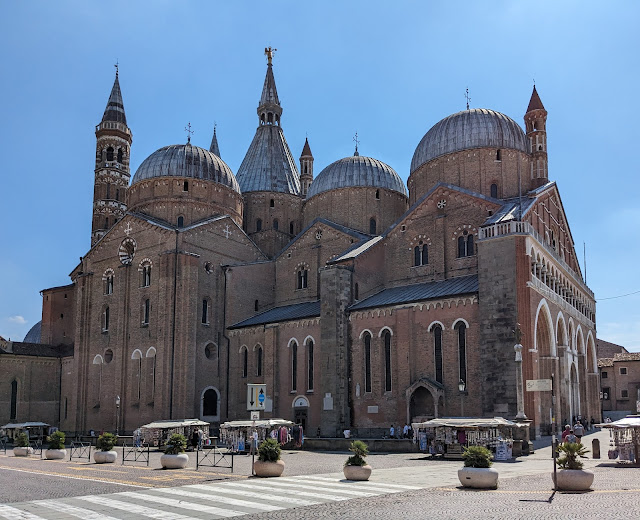








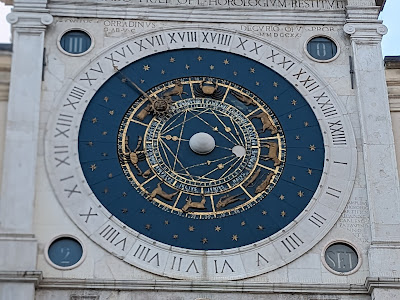




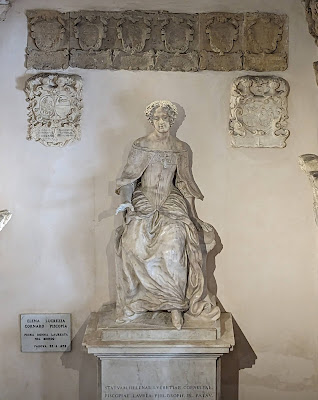
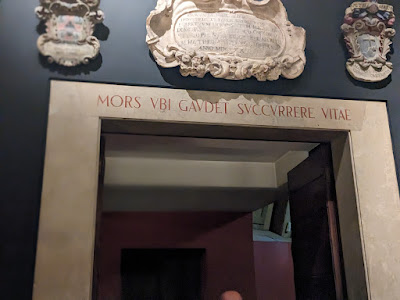



































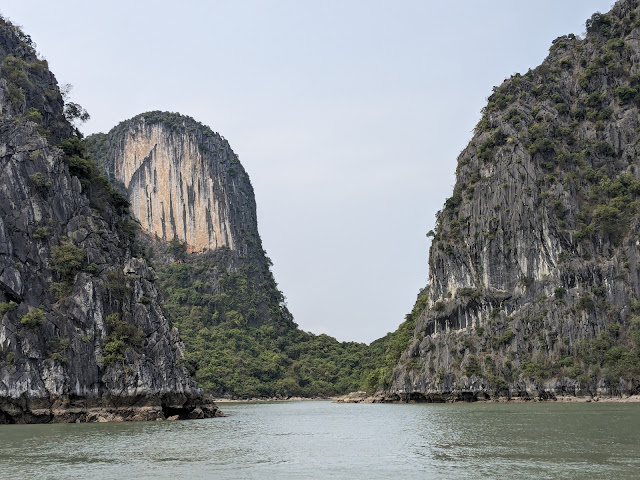


Comments
Post a Comment